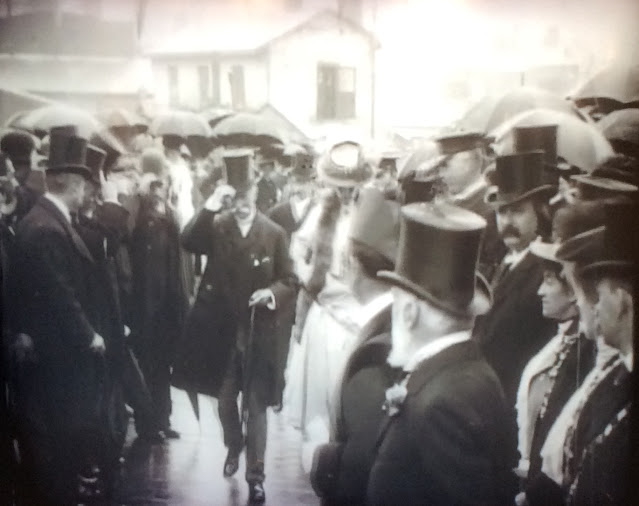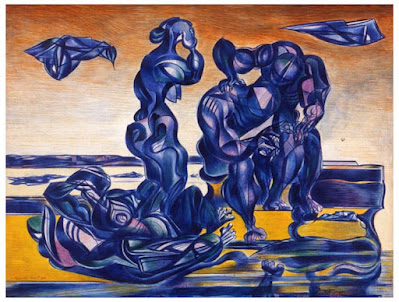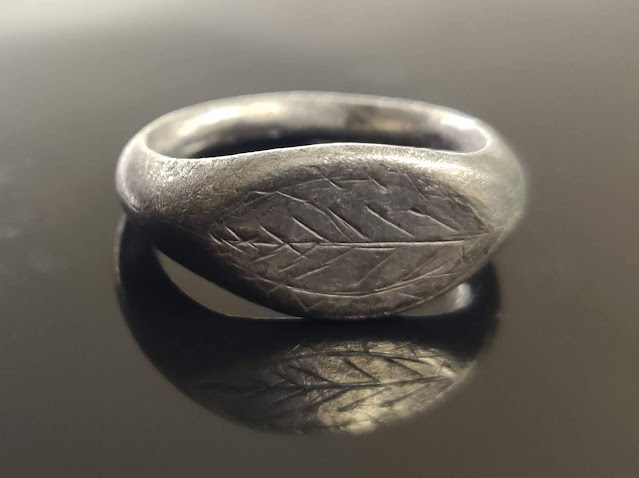Octavious Morgan was b orn 15 September 1803, fourth son of Sir Charles Morgan, 2nd bart. of Ealing, Middlesex, and Tredegar Park, Monmouth. His mother was Mary Margaret, daughter of capt. George Stoney, R.N. and he was a brother of the first baron Tredegar . He entered Christ Church, Oxford, 26 June 1822 (B.A. 1825, M.A. 1832). He was a justice of the peace and deputy-lieutenant of Monmouthshire, and he represented that county in Parliament from 1840 to 1874. Joining the Society of Antiquaries in 1830 and becoming later a vice-president, Morgan was at the time of his death one of its oldest Fellows. He was a constant contributor to the publications of that Society (see Archaeologia , xxxiii, xxxiv, xxxvi), to Archaeologia Cambrensis , and to the Journal of the Royal Archaeological Institute. He was elected F.R.S. in 1832. His name and that of Thomas Wakeman are thought of immediately in connection with the publications of the Monmouthshire and Caerleon Antiquarian Association (fo
Posts
A Roman Soldier Visits Newport Museum and Art Gallery
- Get link
- Other Apps

A Roman Soldier Visits Newport Museum and Art Gallery On Thursday Verdun Howells the Education Officer at the National Roman Legion Museum visited Newport Museum and Art Gallery. Many children came to see him and talk about his life as a Roman Soldier - something about which he knew a great deal having worked at the National Roman Legion Museum at Caerleon for many years. But he was also there to talk about the Roman collection in the museum and as he was in that section of the museum he was drawing attention to the excellent collection of artefacts. It is never easy to take photographs in the Museum because of the lighting which is designed to protect the exhibits. Here is Verdun dressed as a Roman Legionary and as there was no one in this section of the gallery at the time I asked him to draw his sword. This was something he had not been able to do when other people were in the gallery for health and safety reasons, but when I visited there was no one around. Behind Verdun is a d
NEWPORT TRANSPORTER BRIDGE IN FILM by Richard Frame
- Get link
- Other Apps

Newport Transporter Bridge in film There is currently an exhibition of the construction of the Transporter Bridge as seen via the photos and artefacts in the Museum. Here is an article by Richard Frame of the Transporter Bridge in Film. 1906 The Earliest Film The earliest film of the Transporter Bridge relates to its opening in 1906 but the film was not discovered until 1987. The newly formed Newport Maritime Trust had been in touch with film historian John Huntley regarding a chance discovery of some film featuring the Transporter Bridge. Huntley had spent many years working for the British Film Institute but in 1974 retired and set up Huntley Film Archives. A favourite pastime of Huntley’s was rummaging through the bric a brac barrows of the east end of London. He had amassed a collection of old film this way, but one film he bought for five shillings had him stumped. It wasn’t until he took a train journey to Cardiff and was crossing the River Usk at Newport that he spied the unmi
Alex Jarvis and her family photographs of the 75th Anniversary of Newport Transporter Bridge in 1981
- Get link
- Other Apps

Alex Jarvis and her family photographs of the 75th Anniversary of Newport Transporter Bridge in 1981 Stunt Biplanes pass under Newport's Transporter Bridge to celebrate the 75th anniversary of the bridge. Newport Borough Council, as it was known in 1981, planned a 75th Anniversary of the opening of the Transporter Bridge which had taken place on September 12th 1906. They had several events planned. There was a horse and carriage procession from the Mansion House to the bridge carrying mayor Les Knight and other dignitaries. They travelled through Newport to the Bridge where a re-enactment of the opening was provided by Newport Playgoers. Trevor Jones played the part of Lord Tredegar who had switched on the current for the electrically operated bridge on the opening day. But something that really excited the public in 1981 was a dare devil birthday salute via aeroplane. Two stunt pilots made aviation history by swooping under the supports of the Transporter Bridge and thousands of
RE: Treasure case - Medieval annular brooch from Langstone
- Get link
- Other Apps

Oliver Blackmore, the Collections and Engagement Officer at Newport Museum and Art Gallery, has recently acquired a brooch under the Portable Antiquities Scheme in Wales (PAS Wales). Dr Mark Redknap from National Museum Wales, comments - the decorative medieval brooch inlaid with niello is 13th or 14th Century. [Niello is a black mixture, usually of sulphur, copper, silver, and lead, used as an inlay on engraved or etched metal, especially silver. It is added as a powder or paste, then fired until it melts or at least softens, and flows or is pushed into the engraved lines in the metal.] The brooch was found in January 2019 in Langstone, Newport, by Steve Cashmore and Mark Jones with Newport Museum and Art Gallery hoping to acquire the brooch for its collection. Descriptio DescriptioNiello is a black mixture, usually of sulphur, copper, silver, and lead, used as an inlay on engraved or etched metal, especially silver. It is added as a powder or paste, then fired until it melts or
The Tragic Group: The Russian Invasion of Finland
- Get link
- Other Apps

The Tragic Group: The Russian Invasion of Finland Artist: Merlyn Oliver Evans With the Ukraine Russian War taking place Roger Cucksey, who was Keeper of Art In Newport Art Gallery over a period of over thirty years, has reminded us of the relevance of this painting. The Winter War, also known as the First Soviet-Finnish War, was a war between the Soviet Union and Finland. The war began with a Soviet invasion of Finland on 30 November 1939, three months after the outbreak of World War II, and ended three and a half months later with the Moscow Peace Treaty on 13 March 1940. The painting shows a large desolate landscape with a group of people in attitudes of despair in the foreground. It was first exhibited in 1956. It is tempera on a board. Born in Cardiff, Merlyn Oliver Evans (1910 -1973) studied first at the Glasgow School of Art and later at the Royal College of Art, where he would go on to teach at the end of his career. A gifted painter and graphic artist, Merlyn’s work became
The Roman finger-ring from Graig
- Get link
- Other Apps

Roman finger-ring from Graig Newport Museum and Art Gallery has finally received the Roman finger-ring from Graig. This was purchased for the museum by the Friends of Newport Museum and Art Gallery. This finger-ring was discovered by a metal-detectorist in Graig, Newport. It features a palm branch design, which was widely believed to symbolise victory in the Roman period - in particular, victory over the ‘Evil Eye’. Such rings would have functioned as amulets, protecting the wearer from harm. The ring was declared Treasure due to its age and precious metal content. It was purchased by the Friends of Newport Museum and Art Gallery for Newport Museum, where it will be displayed in the near future. see The Treasure Act Code of Practice (2nd Revision) In England, Wales and Northern Ireland, all finders of gold and silver objects, and groups of coins from the same finds, over 300 years old, have a legal obligation to report such items under the Treasure Act 1996. Prehistoric base